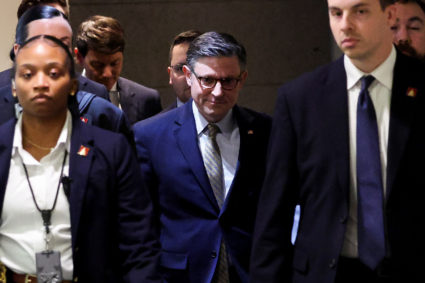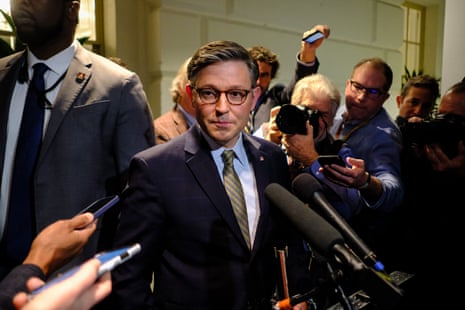When Kayleigh McEnany uttered the phrase “I thought I was dreaming when I saw this,” she captured a moment of profound disbelief — a moment that underlines not just her own transformation, but the turbulent era of American politics she inhabited. The remark points to a deeper story: about perception, loyalty, crisis, and the contours of truth in the public sphere.

Though the exact phrase is not widely documented in mainstream transcripts, the sentiment reflects what McEnany recalled when confronted with unexpected events during her tenure as White House Press Secretary under President Donald Trump. According to her remarks around the time of the January 6 2021 attack on the Capitol, she said:

We had been to hundreds of rallies … and we expected that day to be the same. And then … it was disbelief, shock, sombre, sad, horrified by the violence.”
Her words evoke a surreal recognition: what she believed she knew collided with what actually happened. She states that she and others were not prepared for the chaos that ensued. This sense of “dreaming” underscores the cognitive dissonance of the moment.

Career Trajectory and Context
Kayleigh McEnany made her mark early: a Georgetown and Harvard graduate, media commentator, then campaign spokesperson for Trump’s 2020 re‑election effort, and ultimately White House Press Secretary from April 2020 until the end of the administration.
Her stint coincided with one of the most turbulent periods in recent American history: the COVID‑19 pandemic, racial justice protests, and the 2020 election and its aftermath. With each of these, McEnany was the public face of the administration’s communication strategy — often putting her metaphors of loyalty, risk and surprise in the spotlight.
The Incident of Disbelief
For McEnany, the “dreaming” moment came during the January 6 insurrection. She commented that at the start of that fateful day, “everyone was expecting peace” — referring to the rally of Trump supporters that later erupted into the storming of the US Capitol.
Here’s the breakdown:
Expectation of normalcy: McEnany and her team had attended many rallies previously. She believed the day would be similar: large gathering, political spectacle, departure without major incident.
Reality of violence: Instead, it devolved into unprecedented breach of democratic norms, violence and confusion, leaving White House staff “horrified”.

Cognitive shock: Her remark about disbelief points to the emotional and psychological impact — not just “we didn’t expect this” but “we thought we were in a different reality.”
Public communication challenge: From her vantage point, responsible for briefing the press and crafting the narrative, the event represented a pivot point: how to respond, what to say, how the administration would handle its message.
Why the Statement Matters
The phrase “I thought I was dreaming when I saw this” is telling for several reasons:
Narrative framing: It positions McEnany not as a mere spokesperson, but as someone caught off guard — which undermines the usual image of control associated with a White House press secretary.
Symbol of transition: It marks a shift from “business‑as‑usual” political rallies to a moment of crisis in U.S. democracy. McEnany’s personal reaction becomes emblematic of a broader rupture.
Credibility and perception: The admission of shock complicates her role as defender of administration messaging. It raises the question: what authority does a press secretary have if the unexpected happens and the narrative breaks?
Governance and responsibility: The episode touches on how communication apparatuses respond (or fail to respond) to sudden crises, and whether they are built to handle surprise or only manage pre‑planned events.

Scrutiny and Critique
Of course, McEnany’s tenure and remarks are not without contention.
Guarded truth‑telling: When she took office, McEnany pledged, “I will never lie to you.” Yet critics accused her of misleading statements, selective facts and partisan framing. Defence of controversial positions: She defended positions and narratives from the Trump administration that many fact‑checkers found flawed or misleading, from pandemic responses to election claims.
Crisis communication breakdown: The January 6 aftermath revealed limits to the administration’s ability to respond in real time to unfolding events. The “I thought I was dreaming” line dramatizes this gap.
Media role and spin: McEnany’s style — combative with reporters, assertive in narrative control — raised questions about the function of the press secretary: informer versus advocate. Some observers described her briefings as “contradictions”.

Broader Implications
This moment resonates beyond McEnany personally, suggesting deeper themes:
The fragility of routine: Political life relies heavily on expectations — of rallies, communications, briefings. A moment like January 6 tears away those expectations and exposes the unpredictability of politics.
The role of public spokespersons in crisis: McEnany’s experience highlights the dual pressure on press secretaries: protect the institution’s message, while responding credibly when reality breaks.

Reality versus narrative: The “dream” metaphor points to how narratives can diverge from reality. In political communications, controlling the narrative is key — but when events explode, the narrative can collapse.
Institutional trust and shock: When high‑ranking officials express shock, it signals something much larger: not just surprise, but a moment of institutional reckoning. For many observers, the day was a blow to trust in governance and norms.
< 
What Happened Next
In the days after January 6, McEnany and the White House faced scrutiny from multiple committees and investigations. The integrity of communication channels, the timing of messaging, and the adequacy of response became focal points. Reports noted internal confusion about statements and directives.
Meanwhile, McEnany’s public role shifted — from podium to punditry, commentary and private ventures. Her reflections ahead of leaving the role suggest that she, like many others, felt the weight of the moment.
The Human Element
It is worth considering the human dimension behind the rhetoric. McEnany often speaks about faith, purpose and family. She has cited her religious convictions and sense of calling in taking public roles
Thus, when she says, “I thought I was dreaming when I saw this,” she may also be expressing a deeper sense of isolation, disorientation and challenge: not just to the job she signed up for, but to the moral and institutional environment she believed she entered.
Conclusion
For Kayleigh McEnany, the phrase “I thought I was dreaming when I saw this” captures more than a moment of surprise. It reflects a rupture — between expectation and reality, between managed communication and uncontrollable events, and between the routine of politics and the extraordinary crisis of January 6.
Her career offers a case study in the risks of public spokespersonship in an era of deep divisions, fast‑moving information flows and institutional strain. The moment of disbelief she describes, while personal, is emblematic of a larger shock in American political life: a reminder that even the most rehearsed actors can find themselves stunned by what happens next.